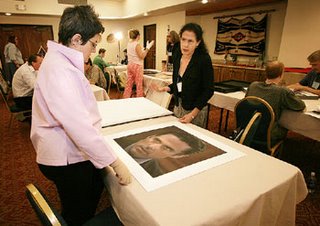Guns, Drugs, and Documentary Photography
Boston's Weekly Dig newspaper has an article about "Boogie," a Brooklyn-based photographer who has been documenting his city's gang culture. Boogie started on his photographic odyssey by hanging out with crack addicts, capturing them in their most unguarded moments, often while doing drugs. Soon, he moved on to photographing Bloods holding pistols and making drug deals. Boogie has an unusual philosophy towards his subjects:
“These are real stories,” Boogie says. “I just try to show things as they are. I’m not trying to preach, or moralize. These are real people, real lives. There are some reasons for why they are like that, but I don’t judge them—who am I to judge anybody? It’s somebody’s reality. I didn’t try to change anything. You know when people tell you the stuff like, ‘I’m trying to change, to make people aware of harsh realities’—I think that’s bullshit.”
Boogie has released his series as a book, titled It's All Good, named after an early photograph of crack addicts. It is currently being published by Powerhouse Books.

















